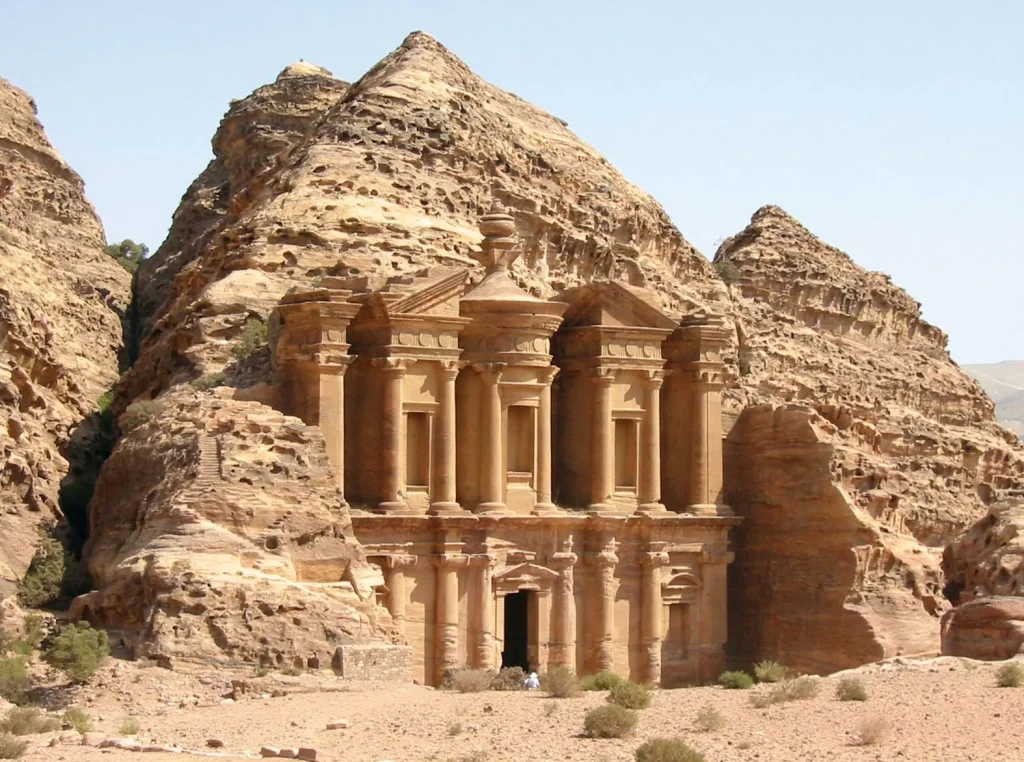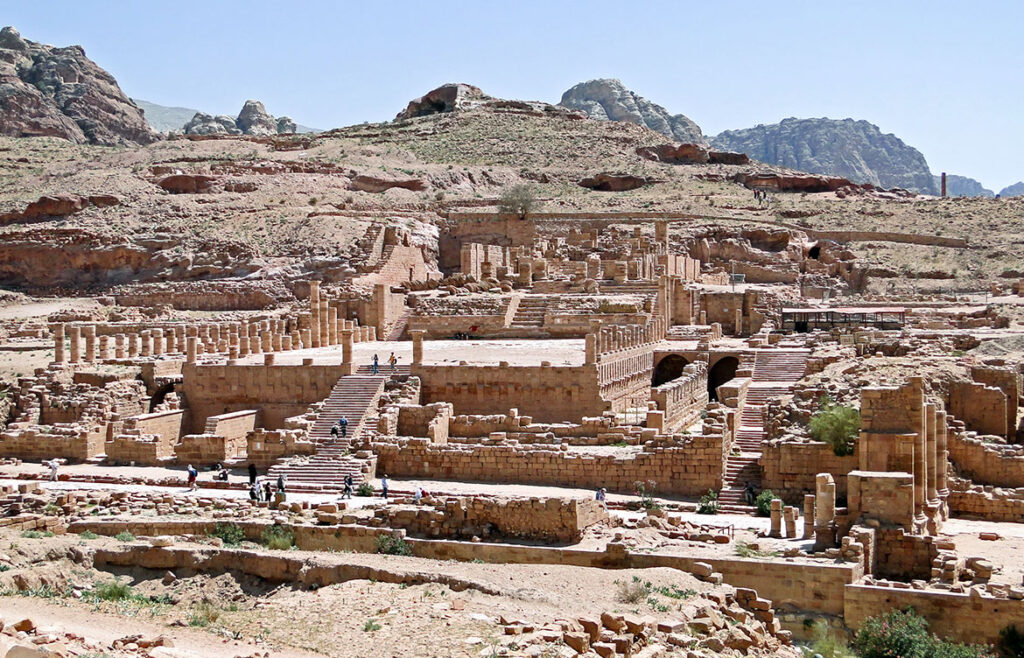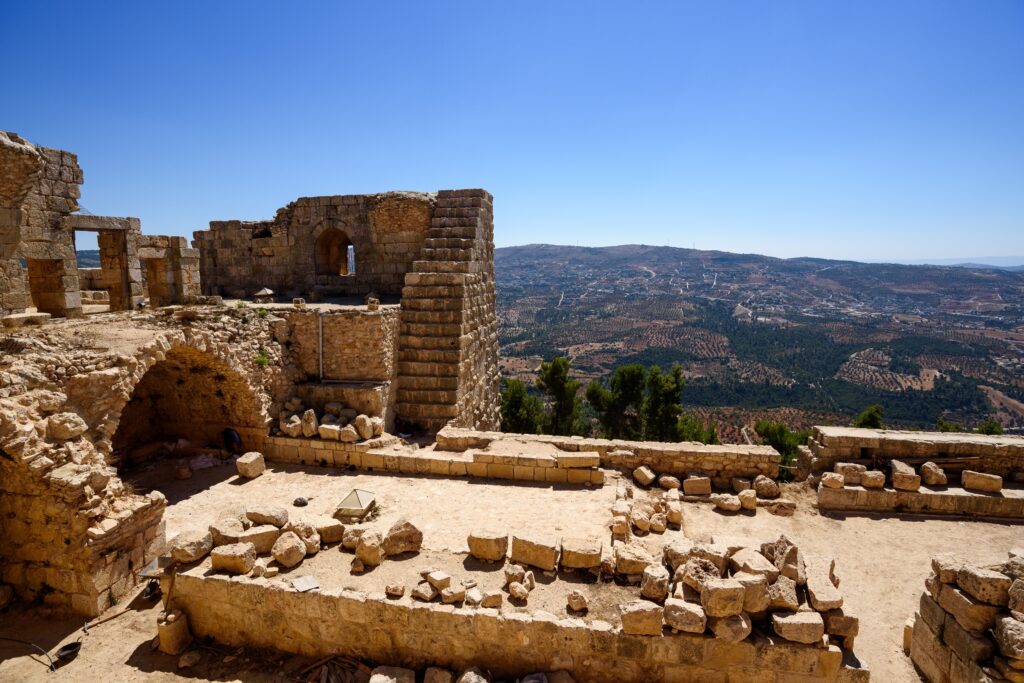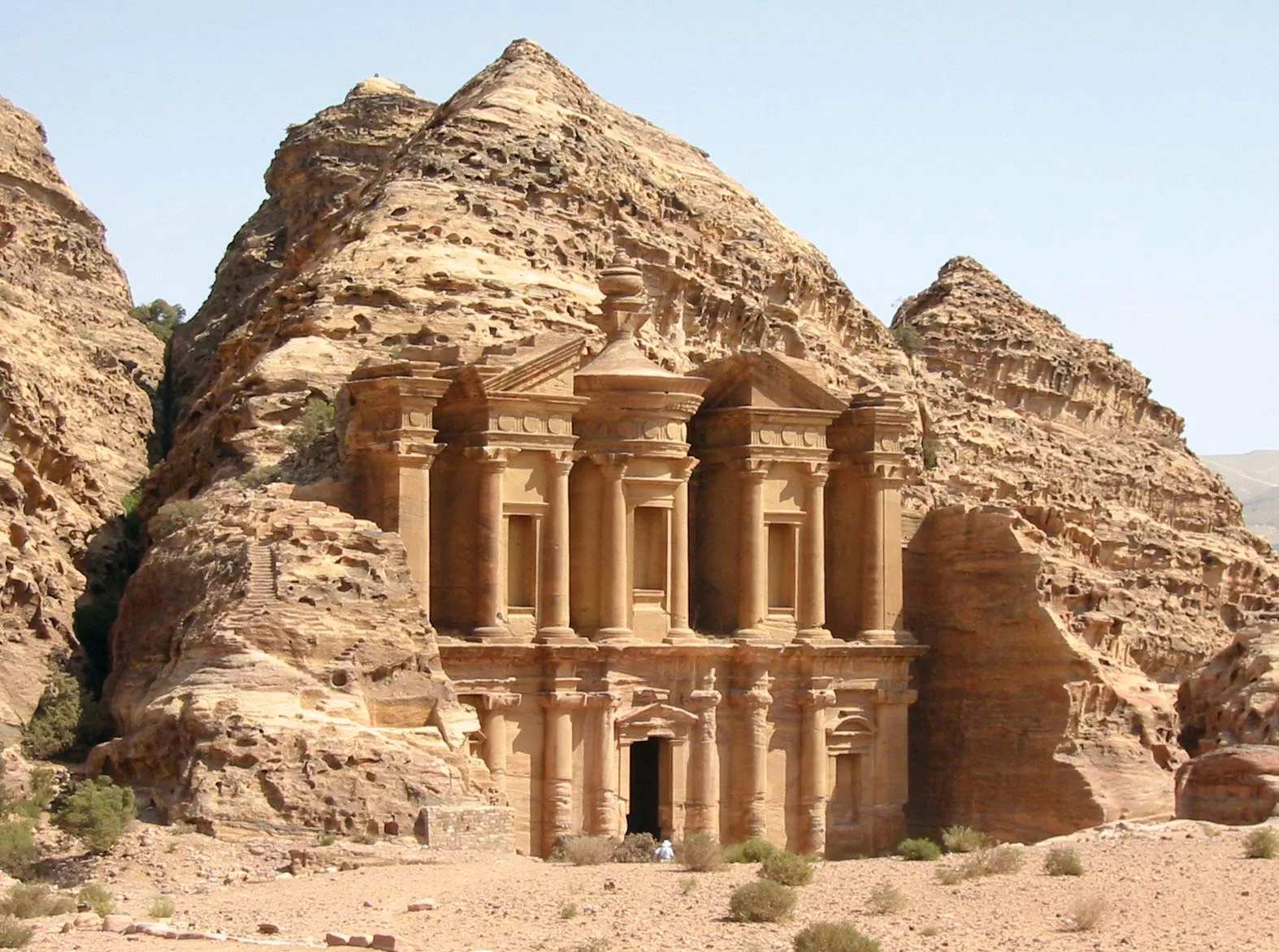Exploring the Rich History of North Jordan
By: Habeeb Salloum/Arab America Contributing Writer

“I’m going to show you the most fantastic sight in Jordan.” Amin, our Palestinian friend, working in Abu Dhabi and now home on holiday, was ecstatic as he went on to describe the tourist attributes of the northern Jordanian mountains. “For me they are the top spot to visit in the Middle East.”
We took him at his word and a few days later we left Amman, Jordan’s handsome capital, and were on our way to Umm Qais – Gadara of the Bible – renowned as a cultural centre in its time. The modern highway, running to the Syrian border, traversed hills, in many places that were covered with trees. A few decades back, when I had travelled in this same area, the countryside was a barren landscape. Today, like in many other parts of Jordan, Syria and the countries of the Arabian Peninsula, the treeless countryside has been planted green with a variety of shrubs and trees, adding colour to a once mundane looking countryside
Turning on the road to Irbid, Jordan’s second largest city, we continued through a landscape filled with farms and olive groves until we reached the city, the Roman town of Arbila. Boasting universities and museums, it forms a good base from which to explore northern Jordan. As we navigated its streets, it appeared to us that this once-farming urban centre was much less clean than the city of Amman.
Past Irbid, we drove through a mountainous countryside filled with olive groves, made somewhat unattractive by the plastic bags seemingly like plants, flourishing on the surrounding hills. After driving for less than two hours from Amman, we entered Umm Qais – located on a wind-swept mountaintop and commanding a magnificent view of the Sea of Galilee (Lake Tiberias), the northern Jordan Valley, the Yarmouk River Gorge, and the Israeli-occupied Syrian Golan Heights. The city was one of the Decapolis, meaning `ten cities’ in Greek, which included ten Graeco-Roman cities located in northern Jordan, Syria and Palestine.

In its days of splendour Gadara was the home of a number of poets and philosophers such as Theodorus, the founder of the Roman rhetorical school. Today, Umm Qais is only partially excavated revealing two theatres, an impressive colonnaded terrace, a Byzantine church, the nymphaeum (sacred pool), public baths, an aqueduct and 17 vaulted shops – showing Greek, Roman, Byzantine, and Islamic influences. Archaeologists predict that when excavations are completed, a major city will be uncovered.
After walking through the ruins, as we stood atop the highest point of these remains, Amin, who was guiding us around, pointed northward, ‘Is there a more majestic view?” Truly, on this clear day, it was an incomparable panoramic vista. Below us, the lush-green spot in the valley were the thermal hot springs of Himmeh, to the ancients the `hot springs of Amatha’, and beyond the Golan Heights and Lake Tiberias, we could see in the distance, the snow-peak of Syria’s Mount Herman. Without question it was worth the trip to glory in this magnificent landscape, invigorated by the cool-fresh air.
Back on the road, we again traversed Irbid and were soon travelling through a countryside filled with olive groves, fruit orchards and vineyards, becoming thicker and thicker as we drove along. In less than half an hour we had passed through the village of Ajloun and were climbing the highest mountain in the north of Jordan up to Qal’at al-Rabad, better known as Ajloun Castle – a 12th century Arab citadel dominating the landscape.

Built in 1184, on an awesome mountaintop, by ‘Izz al-Din Usama ibn Munqidh, a nephew of the famous Salah al-Din al-Ayyubi (Saladin), it became an important strong point in the battle against the Crusaders. The fortress dominated a wide stretch of the northern Jordan Valley and protected the communication routes between south Jordan and Syria. It became one of the chains of forts that lit beacons at night to pass signals from the Euphrates as far as Cairo.
One of the finest existing examples of Arab military architecture anywhere in the Middle East, it held off many assaults by the Crusader armies. In 1266, it was partially destroyed by the Mongols, but a few years later, soon after the Mamelukes’ victory over the Mongols at the Battle of ‘Ain Jalut, the citadel was restored.
Thereafter, due to earthquakes and neglect, it went into decay, until restored in the 1980s. Today, the castle is a favoured tourist and picnic site. Everyday groups of travellers journey to visit the castle and, on the edge of that remarkable 12th century fortress, picnickers enjoy their food in a scenic and exhilarating mountain air atmosphere.
Crossing over a 15 m (50 ft) wide moat, we entered the fairly well-preserved citadel. In a few minutes, we were standing on the castle walls, surveying the green rolling hills that stretched as far as the eye could see. In their midst in the valley below, the white village of Ajloun sparkled in the sunlight. It was a scene no different than that which one would see anywhere in southern Spain or Sicily. Amin gazing into the distance summarized our feelings. “Is this not breathtaking? I love it. It’s a beautiful landscape full of history.”
Leaving this venerable citadel with its breathtaking view, we travelled for less than half an hour through a tree-covered landscape, mostly olive-groves and pine-forest, to Jerash – the most beautifully preserved and restored Graeco-Roman provincial city in the world. Nestled in a green and well-watered valley in the Biblical land of Gilead, it was known as Gerasa in Roman times and was one of the most important cities of the Decapolis.
The day was coming to an end, and I knew that Jerash, alone, would need at least a day of exploration, if one was to savour its remains. For us, its baths, ruins of Byzantine churches, impressive gates, colonnaded streets with their traces of chariot wheels, fountains, plazas, temples, and theatres would have to wait. Today, as we made our way back to Amman, Jordan’s handsome capital, we could only dream of Jerash’s majestic ruins. Our plans were that on the morrow we would return to relish these remains.



